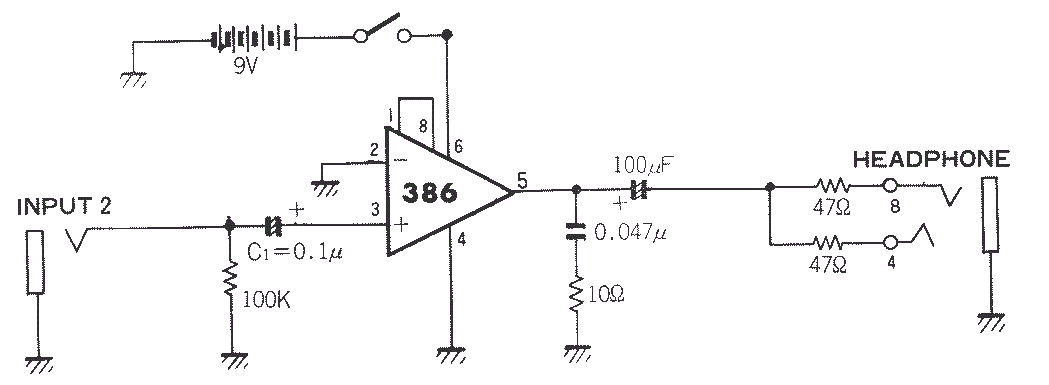|
Yes it's mono. If you want to turn it into stereo, you could build two of these. One powers the tip, and the other the ring. The original schematic appeared in a Japanese book with a lot more filtering in place. I simplified it for almost anyone to be able to build this easily. The 386 is a very robust and forgiving chip. A 9 volt battery will work fine, but a guitar pedal power supply would be good too if you don't mind the wallwart. The chip is an LM386 - which is readily available almost anywhere you can get electronic parts. I recommend using a socket for the chip to make the build easier and more successful. This circuit features a low parts count and can be made for about $10. If you see any corrections or additions that need to be made, please feel free to comment below. Note: If you'd rather have a volume control, you could add one right before the 1/4" out. If you build a stereo version, a stereo potentiometer would be a great addition. Either way, a 100k, audio log potentiometer would work. 1/2 watt is ideal and will work fine. If you are not for sure how to build anything electronically, I have temporarily left my electronics page open for a limited time so that you can learn!
0 Comments
Your comment will be posted after it is approved.
Leave a Reply. |
Do you like vintage recording gear and articles? You should visit our sister site: The Vintage Audio Portal!
**Advertise With Us! We have thousands of visitors a day. Contact us here to learn more.
Archives
August 2021
Categories |

